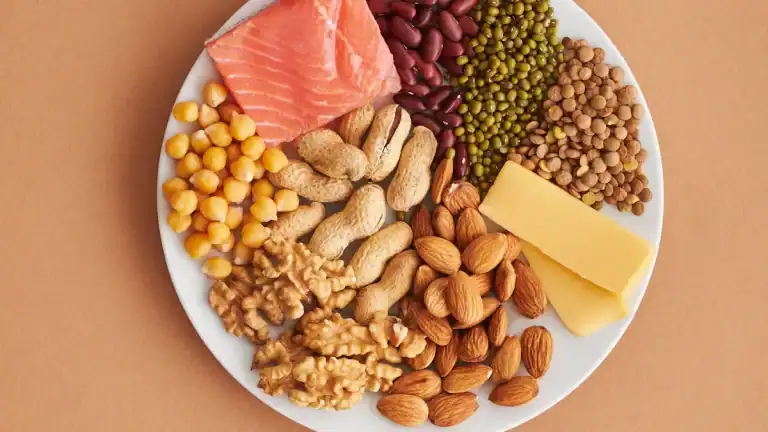You may cherish malt loaf for its sticky sweetness, but ponder whether it’s secretly working against your health. Packed with malt extract, flour, and often a substantial amount of sugar, this dense treat resides somewhere between cake and bread—raising inquiries about its nutritional value. While it offers some fiber and B vitamins, the sugar content can escalate your energy levels only to leave you plummeting later. So, is it an innocent snack or a sugary trap? Let’s break it down.
What Is Malt Loaf Made Of?
Should you ever marvel what bestows malt loaf its sticky sweetness, it’s all about the ingredients. The key players in its ingredient composition are malt extract, flour, sugar, and dried fruit like raisins or sultanas. These come together in a simple manufacturing process where they’re mixed, baked, and left to cool, creating that dense, moist texture you love.
The malt extract—a syrup made from sprouted barley—gives it that rich, caramel-like flavor, while the dried fruit adds natural sweetness and chewiness. Some recipes include spices or a bit of butter for extra richness. It’s not overly complicated, but the balance of these elements makes malt loaf unique. You’ll notice it’s stickier than regular bread because of the high sugar and malt content, which also keeps it soft for days.
Nutritional Breakdown of Malt Loaf
You could ponder how malt loaf fits into your diet if you check its calories and macronutrients. It’s got carbs for energy and small amounts of protein, but you’ll also find some vitamins and minerals like iron and B vitamins.
Understanding this assists you in determining whether it’s appropriate for your requirements.
Calories and Macronutrients
How many calories are packed into a slice of malt loaf? A typical slice (about 40g) contains around 120-150 calories, making it a moderate-energy snack. The malt loaf macronutrient ratios lean heavily toward carbs, with small amounts of protein and fat. Its glycemic index is moderate, so it won’t spike your blood sugar too sharply, but it’s still carb-dense.
| Nutrient | Per Slice (40g) | % Daily Value* |
|---|---|---|
| Carbohydrates | 25-30g | 10-12% |
| Protein | 2-3g | 4-6% |
| Fat | 0.5-1g | <1% |
*Based on a 2,000-calorie diet
Should you be watching your intake, pair it with protein or fiber to balance the carbs. The malt loaf glycemic index means it’s best enjoyed in moderation, especially if one is mindful of sugar.
Vitamins and Minerals
Malt loaf isn’t just about carbs and calories—it also brings a handful of vitamins and minerals to the table. You’ll find B vitamins like niacin and folate, which help your body turn food into energy and support cell growth.
Iron’s in there too, keeping your blood healthy, while small amounts of magnesium and zinc pitch in for muscle function and immunity. The nutrient density isn’t sky-high, but it’s a decent bonus for a sweet treat.
Darker varieties can provide a bit more antioxidant content from malt and dried fruits, helping fight off cell damage. Just don’t rely on it as your main source—think of it as a little extra boost alongside a balanced diet.
Sugar Content in Malt Loaf
You may notice malt loaf has a sweet taste, and that’s because it often contains high sugar levels. Too much sugar can affect your energy levels and long-term health, but you can find lower-sugar options when you look for them.
Let’s compare how different brands stack up and what alternatives could work better for you.
High Sugar Levels
Many malt loaf brands pack a surprising amount of sugar into each slice—sometimes as much as a candy bar. That quick sugar rush may taste good, but it spikes your blood sugar fast due to the high glycemic index of refined sugars. Your body absorbs these sugars quickly, leaving you hungry again soon after.
| Malt Loaf Brand | Sugar per Slice (g) |
|---|---|
| Brand A | 12 |
| Brand B | 15 |
| Brand C | 10 |
Look for lower-sugar options or check labels—some brands use natural sweeteners like dates, which slow sugar absorption. Pairing malt loaf with protein or fiber (like nut butter) can also help balance the glycemic impact. Small changes make a big difference!
Impact on Health
That sweet, sticky slice of malt loaf could appear innocuous, but the sugar content can creep up on your health if one isn’t vigilant. Too much sugar strains your digestive system effects, slowing it down and potentially causing bloating or discomfort.
While malt loaf offers some fiber, its overall nutritional value dips when sugar outweighs benefits. Frequent consumption spikes blood sugar, leaving one tired or craving more sweets. One might notice energy crashes or feel hungrier sooner.
Moderation helps—pairing a small slice with protein or healthy fats balances the impact. Check labels for concealed sugars, and consider homemade versions with less sweetener. Your body thrives on balance, so enjoy treats mindfully without letting them dominate your diet.
Comparing Alternatives
The next section could investigate recipes or store-bought options for malt loaf with less sugar, like using applesauce, dates, or sugar substitutes to maintain flavor while cutting sweetness. In the event that you’re watching your sugar intake, swap refined sugar for natural sweeteners in your bread ingredients—dates add chewiness, while applesauce keeps moisture. Look for brands with no added sugars or make your own to control sweetness.
Proper storage methods, like wrapping it tightly or freezing slices, help keep homemade malt loaf fresh longer. Check labels for concealed sugars in store-bought versions, and opt for whole-grain flours to boost fiber. Experiment with cinnamon or nutmeg to improve taste without extra sugar. Small tweaks can make malt loaf healthier without losing its comforting texture.
Calorie Density and Portion Control
While malt loaf can be a tasty snack, it’s pretty calorie-dense, so minding your portions matters. A small slice packs more energy than one might expect, which can add up quickly if one’s not careful. Practicing mindful eating helps—pay attention to portion sizes and savor each bite instead of mindlessly reaching for more.
| Food | Calories per 100g |
|---|---|
| Malt loaf | 290 |
| Whole wheat bread | 250 |
| Banana | 89 |
| Apple | 52 |
| Yogurt | 59 |
Stick to a single slice and pair it with something lighter, like fruit, to balance your snack. Smaller portions let you enjoy the flavor without overdoing it. Listen to your body—it’ll tell you when you’ve had sufficient.
Fibre Benefits in Malt Loaf
You couldn’t realize malt loaf packs a solid fibre punch, but it actually helps keep your digestion running smoothly. The fibre in it doesn’t just ease bloating—it also works behind the scenes to support your heart health by managing cholesterol.
It’s a simple way to sneak more gut-friendly nutrients into your day.
Digestion Support
Malt loaf’s chewy texture hides a little-known digestive helper – fibre. It’s packed with soluble fibre, which slows digestion to keep you full longer and supports improved digestion by softening stools. This helps prevent bloating and keeps things moving smoothly, so your gut health stays on track.
Here’s how malt loaf’s fibre works for you:
- Feeds good bacteria: Fibre acts as a prebiotic, nourishing the beneficial microbes in your gut.
- Reduces constipation: The soluble fibre absorbs water, making stools easier to recall.
- Balances digestion: It helps regulate bowel movements, preventing both diarrhea and sluggishness.
With each bite, you’re not just enjoying a sweet treat—you’re giving your digestive system a gentle boost. Just recollect, moderation is key to avoiding excess sugar while reaping these benefits.
Heart Health Boost
Since heart health depends heavily on what you eat, the fibre in malt loaf can be a real ally. It helps with cholesterol reduction by binding to LDL (the “bad” cholesterol) and flushing it out, which lowers your risk of heart disease prevention.
The soluble fibre in malt loaf slows digestion, keeping blood sugar stable and reducing strain on your heart. Plus, it’s packed with whole grains, which studies link to better cardiovascular health. You’ll also get a dose of potassium, which helps regulate blood pressure.
Just watch the sugar content—opt for versions with less added sweeteners. Pair it with nuts or fruit for an extra heart-friendly snack. Small changes like this add up, so enjoy malt loaf mindfully for a healthier heart.
Vitamins and Minerals Present
- Zinc: Boosts your immune system and helps heal wounds faster.
- Magnesium: Eases muscle cramps and keeps your nerves calm.
- Iron: Fights fatigue by helping your blood carry oxygen.
While it’s not a multivitamin, malt loaf gives you a nutrient boost in a tasty package. Just recall, balance is key—enjoy it as part of a varied diet to get the most benefits.
Comparing Malt Loaf to Other Breads
Bread comes in many forms, and malt loaf stands out with its dense, sweet texture—but how does it stack up against other types? Malt loaf leans sweeter than whole wheat or sourdough, thanks to added sugars and malt extract. It often has a higher calorie count but offers less fiber than whole grain options. Ingredient quality varies; some malt loaves use refined flour, while others include whole grains. Check the nutritional profile to see how it fits your diet.
| Type | Key Ingredient | Nutritional Highlight |
|---|---|---|
| Malt Loaf | Malt extract, sugar | Higher sugar, moderate fiber |
| Whole Wheat | Whole grains | High fiber, lower sugar |
| Sourdough | Fermented dough | Gut-friendly, low GI |
| Rye | Rye flour | Dense, rich in minerals |
| White | Refined flour | Low fiber, quick energy |
Compare labels to choose what works for you.
Potential Health Risks of Regular Consumption
Even though malt loaf could feel like a comforting snack, eating it too often could result in a few health concerns. While it’s not inherently bad, regular consumption may lead to potential dietary concerns when you’re not mindful of your overall diet.
- Weight Gain: Malt loaf is calorie-dense, and overindulging without balancing your meals could contribute to unwanted weight.
- Digestive Issues: Its high sugar and fiber content could cause bloating or discomfort if your body isn’t used to it.
- Nutrient Imbalance: Relying on it too much might crowd out other nutrient-rich foods, leading to gaps in your diet.
These negative health impacts aren’t guaranteed, but being aware helps you enjoy malt loaf without overdoing it. Moderation is key!
Malt Loaf and Blood Sugar Levels
Because malt loaf contains natural sugars and refined carbohydrates, it can affect your blood sugar levels—especially when you eat it often or in large portions. The glycemic index (GI) of malt loaf is moderate to high, meaning it causes a quicker rise in blood sugar compared to low-GI foods.
This triggers your insulin response, which helps manage sugar levels but can lead to energy crashes if overused. Should you be sensitive to blood sugar spikes, you may feel tired or hungry soon after eating it.
Pairing malt loaf with protein or fiber, like nuts or yogurt, can slow digestion and soften the impact. Watch portion sizes, and in the event you have diabetes or insulin resistance, monitor how your body reacts. Balance is key to enjoying it without discomfort.
Healthier Alternatives to Malt Loaf
- Whole grain banana bread: Swap refined flour for whole grain, and use ripe bananas to cut added sugar. It’s moist, sweet, and packed with fiber.
- Date and nut bars: Dates add natural sweetness, while nuts provide crunch and healthy fats. They’re easy to make and store well.
- Oatmeal muffins: Use oats for fiber, and sweeten with applesauce or mashed pumpkin. They’re filling and won’t wreck your blood sugar.
These choices let you enjoy similar flavors while keeping things balanced. Experiment to find your favorite!
Conclusion
So, is malt loaf bad for you? Not necessarily—if you enjoy it wisely. While it packs a sugar punch that could knock out a marathon runner, moderation and smart pairings (like nuts or yogurt) can keep it in your diet without guilt. Conceive of it as a treat, not a staple, and your body will thank you. Balance is key, and hey, life’s too short to skip the occasional slice!




